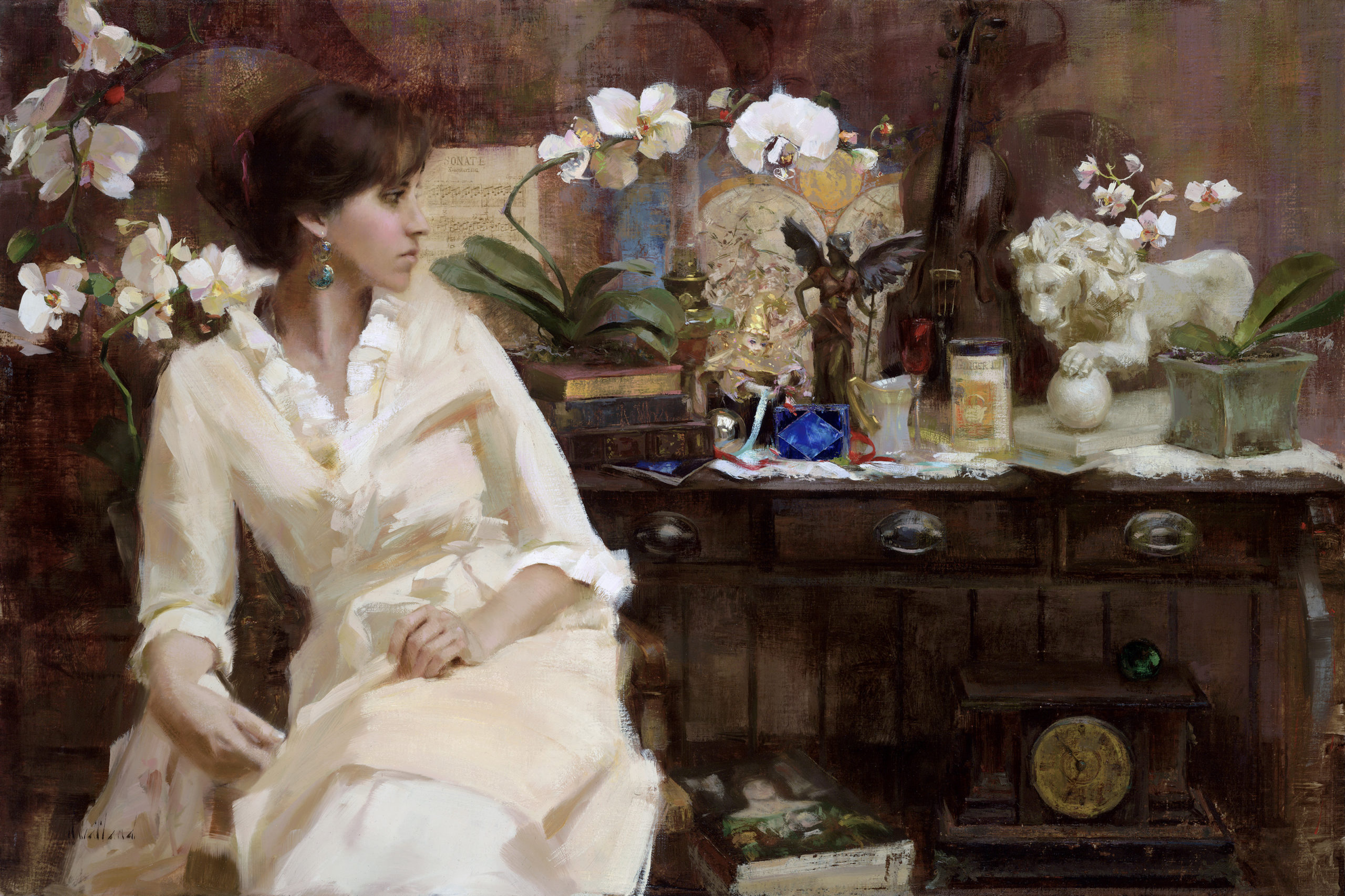Mastering Composition and Shade in Figurative Oil Painting
Mastering Composition and Shade in Figurative Oil Painting
Blog Article
A Journey Via the Globe of Metaphorical Oil Painting: Uncovering the One-of-a-kind Attributes and Emotional Deepness of the Medium

History of Figurative Oil Painting
Emerging during the late Middle Ages and growing throughout the Renaissance, metaphorical oil paint has an abundant background that mirrors both artistic innovation and cultural evolution. Oil paints were made use of in Europe as a means to enhance the luminosity and depth of color in art work. Musicians such as Jan van Eyck spearheaded the medium, demonstrating its potential to capture elaborate details and textures, hence permitting for a much more realistic representation of the human kind.
As the Renaissance progressed, popular figures like Leonardo da Vinci and Michelangelo increased the limits of figurative oil painting. They emphasized physiological precision and viewpoint, creating works that shared emotion and narrative depth. The tool's adaptability permitted testing with light and shadow, leading to the growth of chiaroscuro strategies that further enriched the aesthetic experience.
Distinct Characteristics of the Tool
The development of figurative oil paint has been dramatically affected by the distinct features of the medium itself. Oil paint, made up of pigments suspended in oil, supplies artists an impressive adaptability that enables a variety of textures and surfaces. Its slow drying time enables careful blending and layering, which can produce deepness and luminosity unattainable in various other tools.
Furthermore, oil paint's abundant pigmentation offers dynamic shades that keep their intensity gradually. This particular is important in metaphorical painting, where recording the nuances of complexion and emotional expressions is extremely important. The ability to attain subtle gradients and soft changes boosts the natural quality of subjects, enabling musicians to convey complex moods.
Furthermore, oil paint sticks well to numerous surfaces, such as wood, metal, and canvas, widening the range of artistic expression. The medium's flexibility sustains different techniques, from in-depth realistic look to meaningful brushwork, making it possible for artists to explore their specific styles.
Eventually, the unique homes of oil paint not only enrich the visual experience but additionally empower artists to communicate extensive stories, making metaphorical oil paint a deeply expressive art type.
Techniques and Styles Employed
Within the realm of metaphorical oil paint, artists use a varied variety of methods and styles that add to the deepness and splendor of their work. One prominent strategy is glazing, where transparent layers of paint are applied over dried out layers, enabling light to show and permeate, boosting brightness and deepness. This technique is typically used to attain a feeling of realism and intricacy in complexion.
One more strategy is impasto, where thick layers of paint are used with a combination knife or brush, producing a textured surface area that includes a three-dimensional high quality to the paint. This design can evoke a natural action, drawing the customer in through its responsive nature.
Musicians likewise discover various brushwork designs, from fine, thorough strokes that catch detailed functions to broader, a lot more meaningful strokes that communicate activity and emotion (figurative oil painting). The option of shade scheme substantially influences the general state of mind of a piece, with warm tones often passing on sensations of convenience and great tones recommending melancholy
Additionally, the assimilation of chiaroscuro, the contrast between light and darkness, allows artists to create dramatic impacts that improve the narrative top quality of their work. Each method and design is carefully chosen to raise the visitor's experience and understanding.
Emotional Depth in Figurative Art
Psychological deepness works as a foundation in metaphorical art, permitting musicians to go beyond mere representation and involve viewers on a profound level. This emotional resonance is commonly attained via the nuanced portrayal of human numbers, expressions, and communications. Artists harness the power of light, color, and shadow to stimulate sensations that resonate deeply with the audience, developing a visceral link to the subject.
In figurative oil paint, the complex layering of paint can reflect the complexities of human emotion. The choice of combination, whether trendy or cozy, plays an important role in setting the mood and ambience of an item. Softer look at this now shades might evoke harmony and introspection, while vibrant, contrasting shades can interact tension and dramatization.

Influential Artists and Their Functions
Various significant musicians have actually significantly shaped the landscape of metaphorical oil painting, each contributing unique viewpoints and strategies that continue to motivate contemporary developers. Among these musicians, Lucian Freud stands out for his intense psychological deepness and raw portrayal of the human type, often obscuring the lines between beauty and decay. Freud's works, characterized by thick, impasto brushstrokes, welcome visitors to challenge the intricacies of identity and vulnerability.

In A Similar Way, Andrew Wyeth's careful realistic look in pieces like "Christina's Globe" captures profound narratives within seemingly straightforward make-ups. His use light and shadow evokes a sense of nostalgia and psychological resonance, attracting audiences into the intimate worlds he portrays.
In the world of modern art, Kehinde Wiley has actually gained acknowledgment for his dynamic, epic pictures that challenge standard ideas of representation. By putting people of shade in contexts reminiscent of timeless portraiture, Wiley's job redefines the canon of art background.
These artists, alongside others, have not just enriched figurative oil painting however have actually also increased the dialogue surrounding culture, emotion, and identification, guaranteeing that the tool stays an important form of expression in the art world. figurative oil painting.
Conclusion
To conclude, figurative read more oil paint stays an effective medium that envelops the complexities of human emotion with its abundant pigmentation and functional methods. The historic development of this art kind, integrated with its one-of-a-kind qualities, enables extensive imaginative expression. Methods such as glazing and impasto boost the emotional vibration of each item, while the contributions of prominent musicians continue to motivate and shape the discussion bordering this timeless category. The trip through metaphorical oil paint reveals its enduring significance in the art world.
The expedition of figurative oil painting provides a profound insight into the interaction of strategy, feeling, and historical context that defines this venerable medium. Oil paint, made up of pigments put on hold in oil, supplies musicians an amazing adaptability that permits for a vast array of textures and finishes.Within the realm of figurative oil painting, musicians employ a varied array of techniques and designs that add to the deepness and splendor of their job.Many significant musicians have substantially formed the landscape of figurative oil painting, each adding one-of-a-kind viewpoints and strategies that proceed to influence contemporary designers.In final thought, metaphorical oil painting continues to be an effective tool that envelops the complexities of human feeling via its abundant coloring and flexible methods.
Report this page